How Does Space Become Transparent?
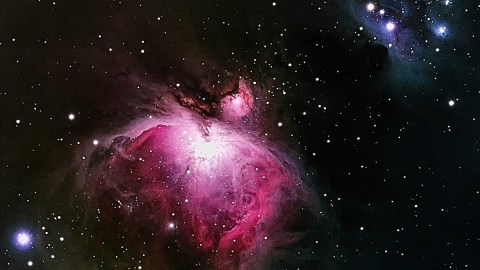
The Orion Nebula demonstrates the answer.
“So numerous are the objects which meet our view in the heavens, that we cannot imagine a point of space where some light would not strike the eye; — innumerable stars, thousands of double and multiple systems, clusters in one blaze with their tens of thousands of stars, and the nebulae amazing us by the strangeness of their forms and the incomprehensibility of their nature, till at last, from the limit of our senses, even these thin and airy phantoms vanish in the distance.” –Mary Fairfax Greig Somerville
Named “nebulae” because of their structure on the sky, these bright objects are actually nothing more than neutral gas.
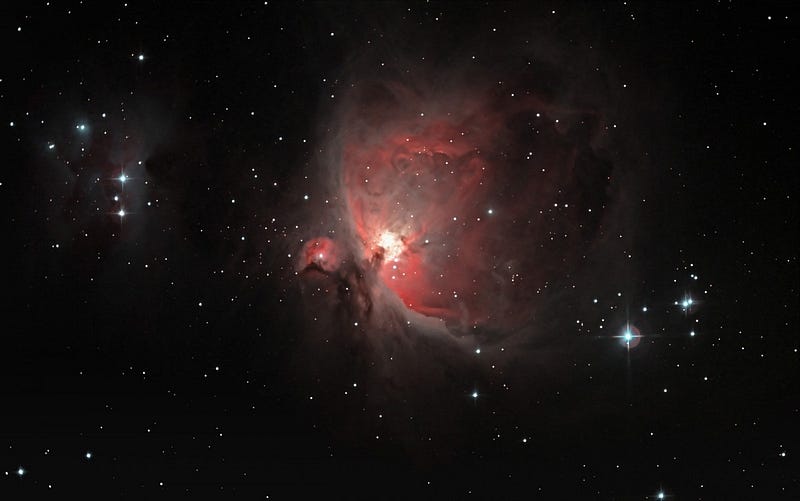
The reason they appear illuminated at all are because they either reflect/disperse starlight or emit light themselves, as Orion’s pink patches show.
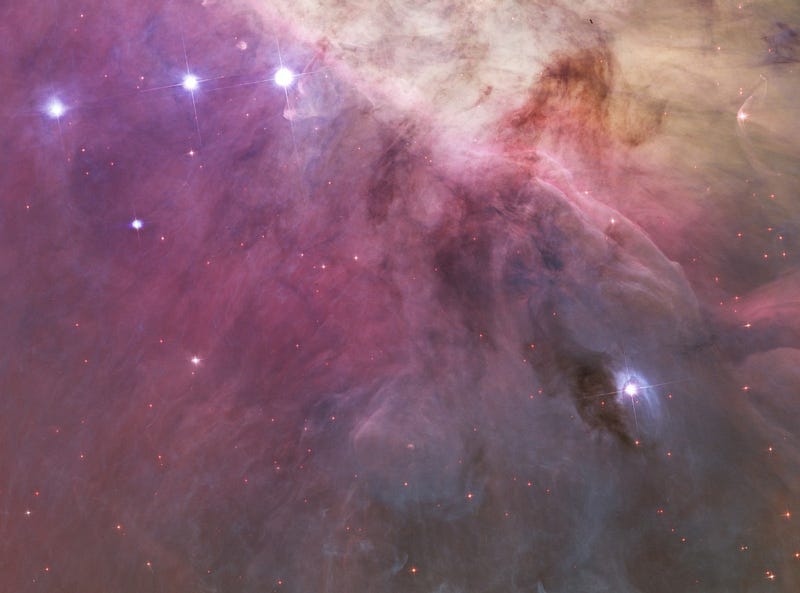
This emission occurs when electrons recombine with nuclei post-ionization, where ionization is caused by the intense ultraviolet light from hot, blue stars.
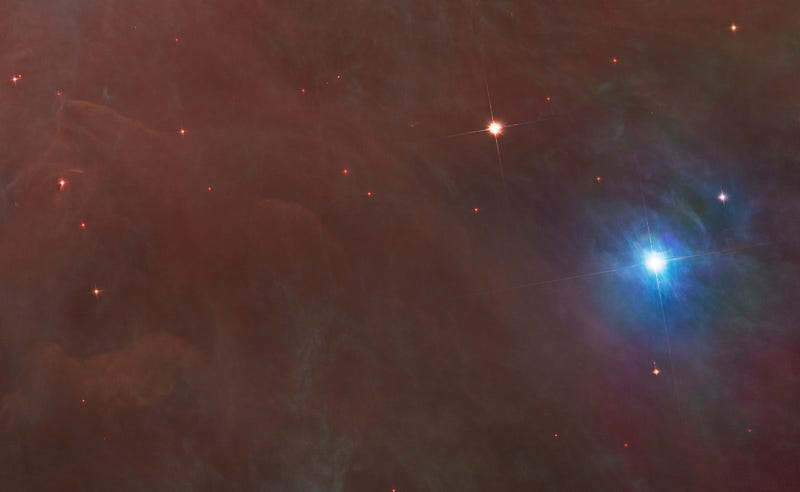
The hottest, most massive stars ionize the gas fastest, with the least gas-dense regions becoming completely ionized first.
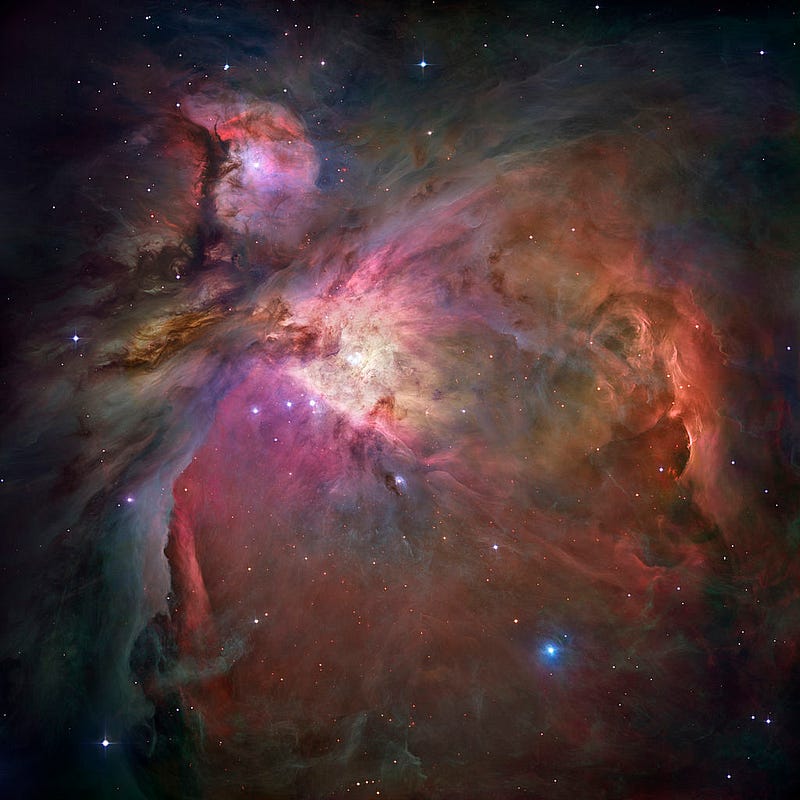
When ionization is complete, not only are even the faintest stars revealed, but light from all the stars and galaxies beyond streams through.
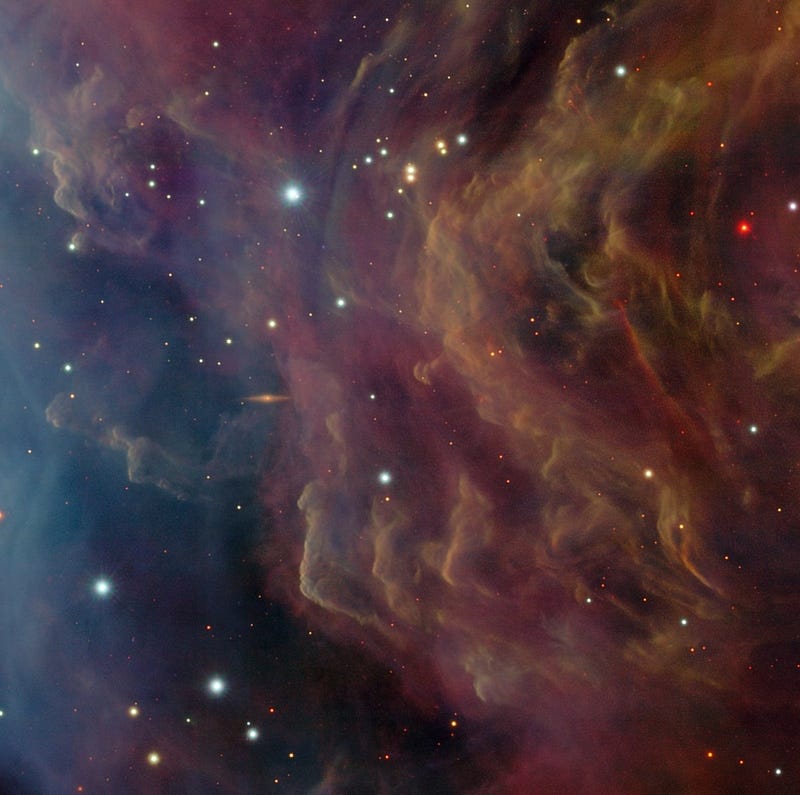
The finals stages of this evaporation are visible through the tadpole-like tendrils known as evaporating gaseous globules (EGGs): the last gasps of the neutral gas.
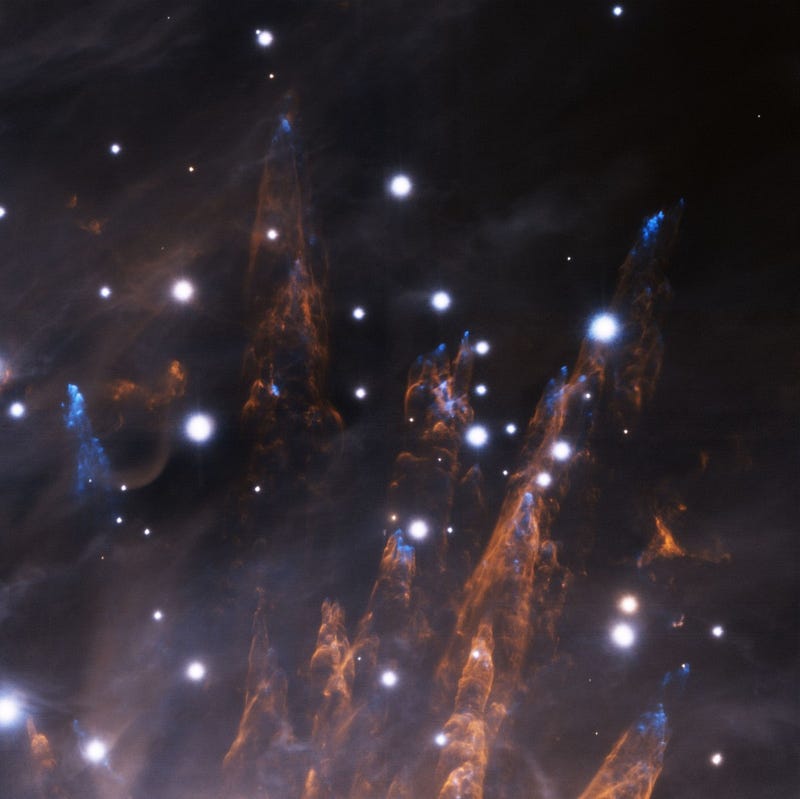
Until the gas is completely ionized, visible light can be reflected or absorbed, depending on the orientation of the stars and gas with respect to us.
The only way to see through neutral gas is by looking in the infrared, which is sensitive to other features.
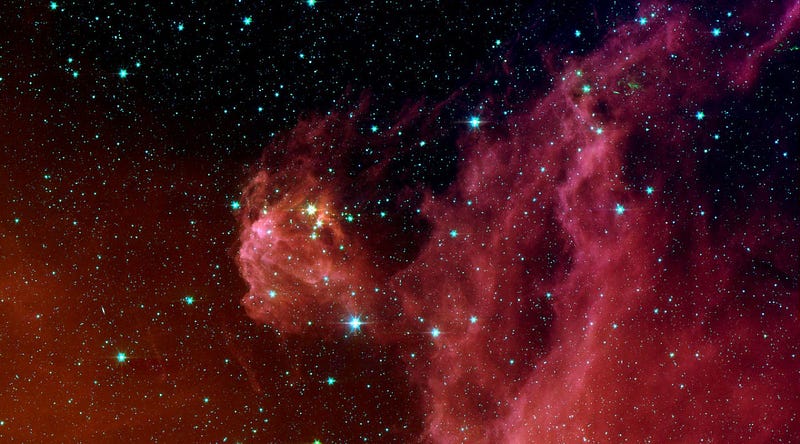
Once the gas is 100% ionized, it’s 100% transparent, and the entire Universe is revealed.
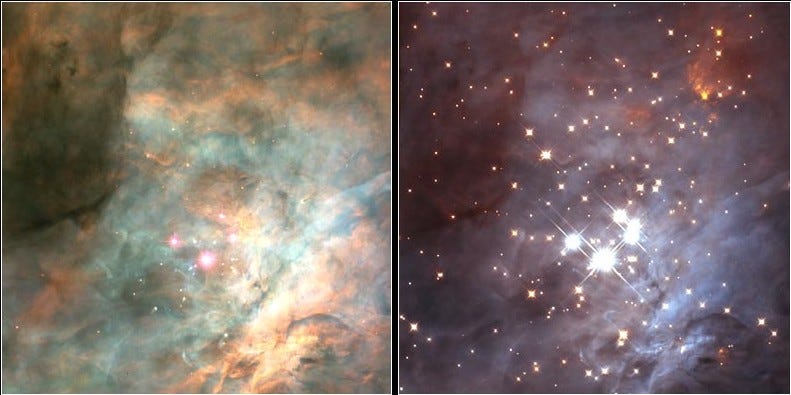
Mostly Mute Monday tells the story of a single astronomical phenomenon or object in visuals, images and video in no more than 200 words.
Leave your comments on our forum, and check out our first book: Beyond The Galaxy, available now, as well as our reward-rich Patreon campaign!




